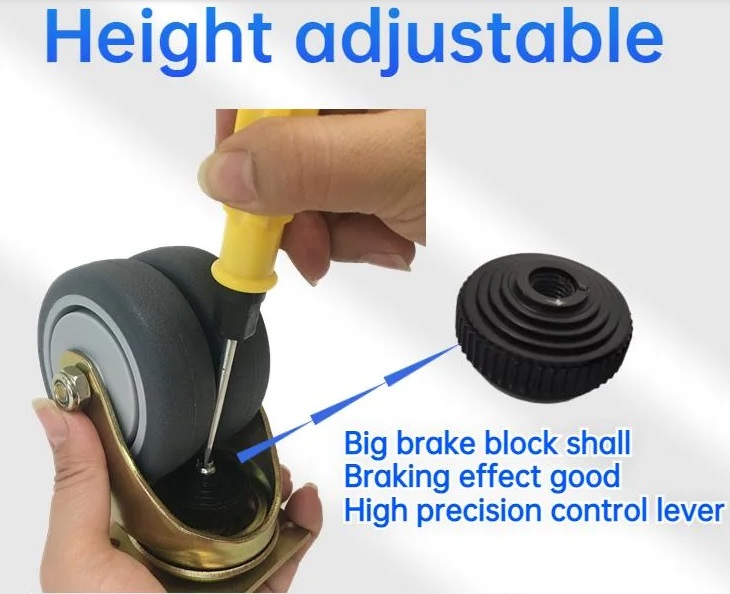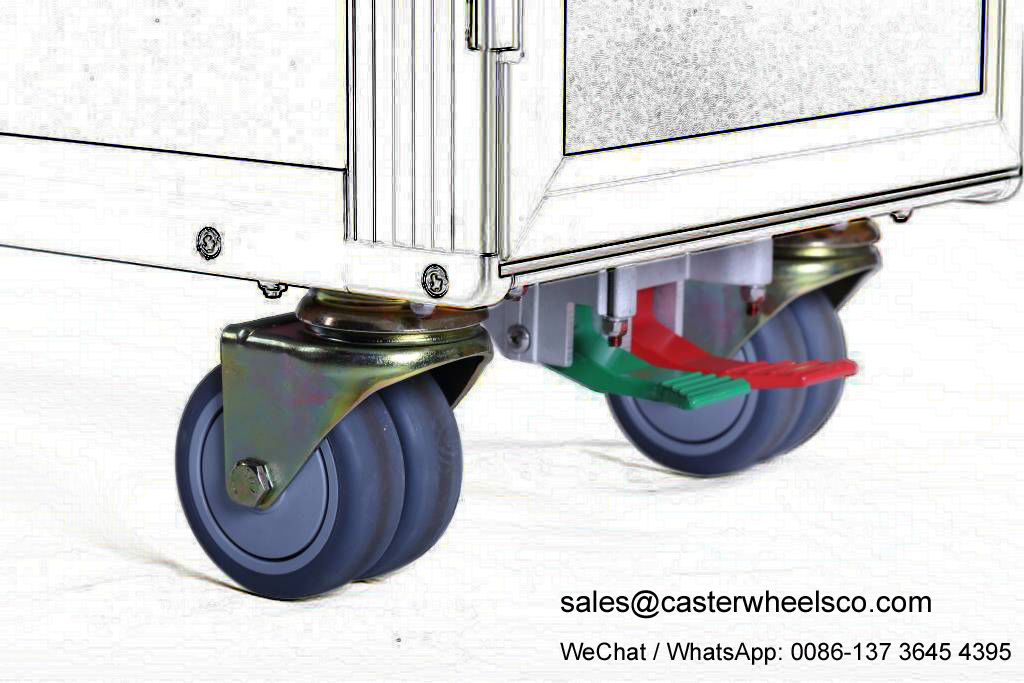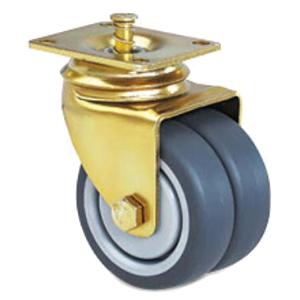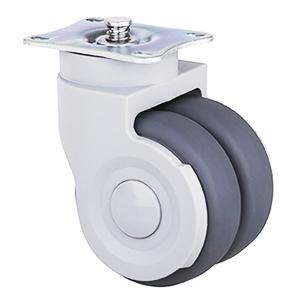Different between metal bracket and plastic bracket airline trolley casters
Q: What are metal and plastic brackets in airline trolley casters?
A: Metal and plastic brackets are the components in airline trolley casters that hold the wheels in place and provide support to the caster. These brackets serve as a critical component in the overall design of the caster, as they determine the strength, durability, and performance of the caster.
Q: What is the difference between metal and plastic brackets in airline trolley casters?
A: The primary difference between metal and plastic brackets in airline trolley casters is the material used in their construction. Metal brackets are typically made from steel, aluminum, or other durable metals, while plastic brackets are made from high-strength plastics such as nylon
Q: Which is better, metal or plastic brackets in airline trolley casters?
A: The choice between metal and plastic brackets depends on the specific needs and application of the airline trolley caster. Both materials have their advantages and disadvantages.
Q: What are the advantages of metal brackets in airline trolley casters?
A: Metal brackets offer several advantages in airline trolley casters, including:
Strength and durability: Metal brackets are stronger and more durable than plastic brackets, making them ideal for heavy-duty applications.
Higher load capacity: Metal brackets can support heavier loads than plastic brackets, making them suitable for larger and more substantial airline trolleys.
Better resistance to wear and tear: Metal brackets are more resistant to wear and tear than plastic brackets, making them ideal for use in harsh environments such as airports and cargo areas.
Better heat resistance: Metal brackets are less likely to melt or deform at high temperatures, making them suitable for use in hot environments.
Q: What are the disadvantages of metal brackets in airline cart casters?
A: Metal brackets also have some drawbacks, including:
More substantial weight: Metal brackets are heavier than plastic brackets, which may affect the maneuverability of the caster.
Corrosion: Some metals, such as steel, can corrode over time, which may affect the longevity of the caster.

Q: What are the advantages of plastic brackets in airline trolley casters?
A: Plastic brackets offer several advantages in airline trolley casters, including:
Lightweight: Plastic brackets are lighter than metal brackets, making them easier to maneuver and handle.
Corrosion-resistant: Plastic brackets are not susceptible to corrosion, making them ideal for use in humid or wet environments.
Quieter operation: Plastic brackets produce less noise than metal brackets, which can be useful in quiet environments such as airplanes or hospitals.

Q: What are the disadvantages of plastic brackets in airline trolley casters?
A: Plastic brackets also have some drawbacks, including:
Higher cost: Normally Metal brackets are generally more expensive than plastic brackets, which may affect the overall cost of the caster. But if we want to make the Plastic brackets with the same strength as metal bracket type,the cost will be higher.
Lower load capacity: Normally Plastic brackets cannot support as much weight as metal brackets, making them unsuitable for heavy-duty applications.
Lower heat resistance: Plastic brackets can melt or deform at high temperatures, which may limit their use in hot environments.
Wear and tear: Plastic brackets are more prone to wear and tear than metal brackets, which may affect their longevity.
Q: What factors should be considered when choosing between metal and plastic brackets in airline trolley casters?
A: Several factors should be considered when choosing between metal and plastic brackets in airline trolley casters, including the load capacity required, the operating environment, the overall cost of the caster, and the level of noise that is acceptable. It is essential to evaluate these factors to determine the most suitable option for a specific application.



 English
English Spanish
Spanish German
German Russian
Russian Arabic
Arabic Portuguese
Portuguese Italian
Italian French
French Hebrew
Hebrew Turkish
Turkish